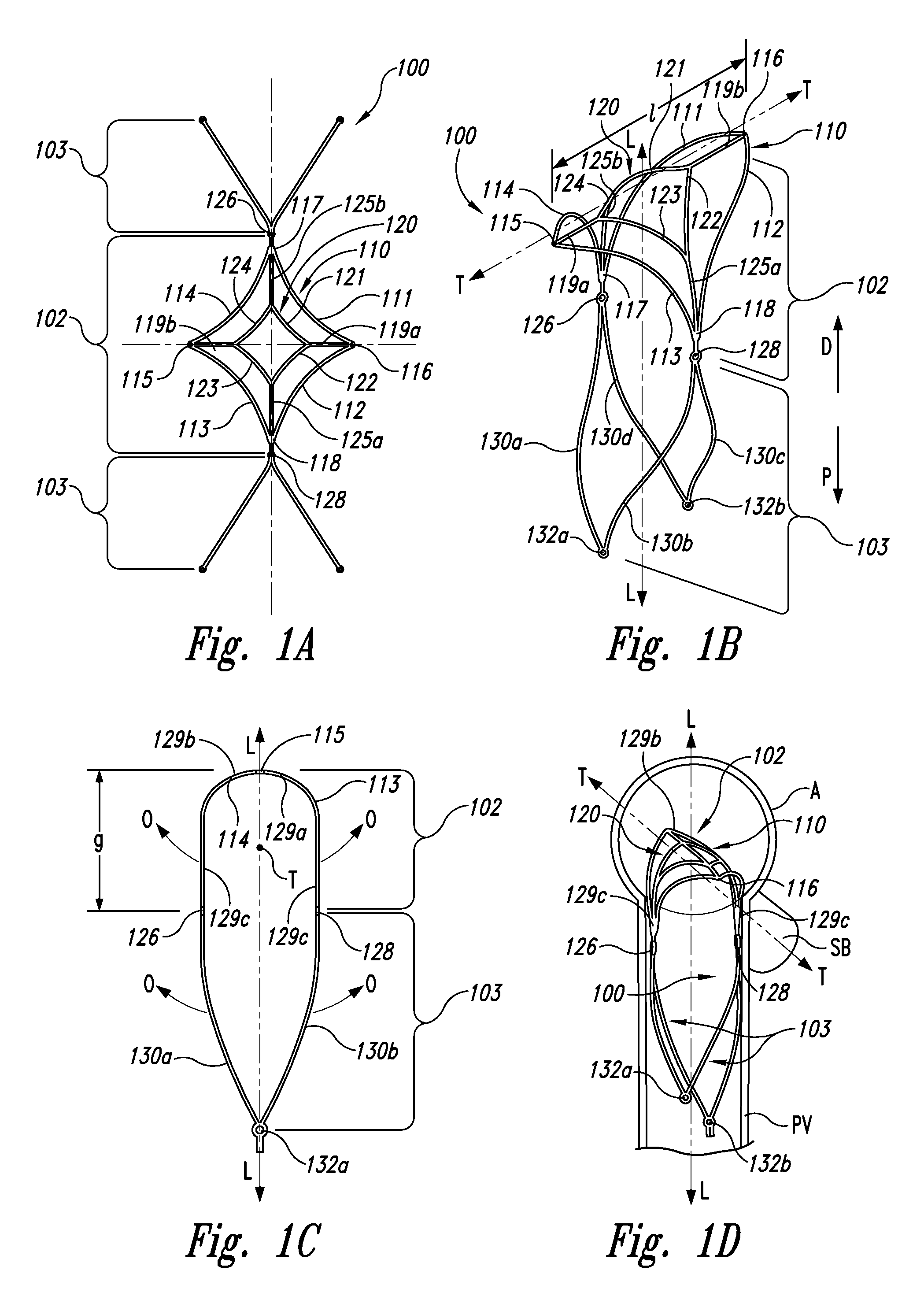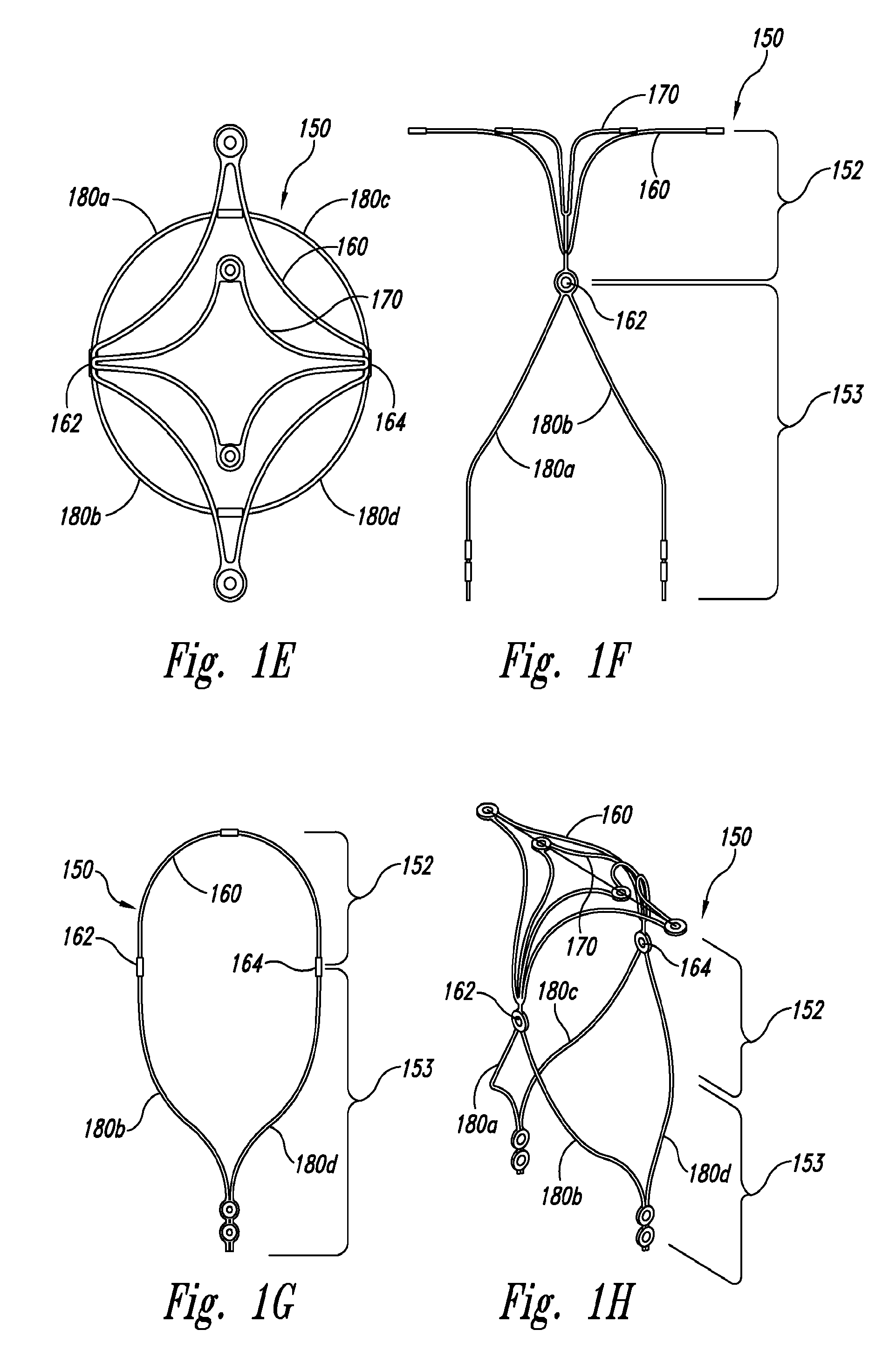Systems and methods for enclosing an anatomical opening
a technology of anatomical opening and anatomical lumen, which is applied in the field of implantable therapeutic devices and endovascular placement of devices, can solve the problems of high risk of anesthesia, bleeding, and infection associated with these types of procedures, and the current surgical approaches available for repairing defects in anatomical lumens and tissues, and repairing defects in septal defects, etc., and other types of anatomical irregularities and defects. high risks
- Summary
- Abstract
- Description
- Claims
- Application Information
AI Technical Summary
Benefits of technology
Problems solved by technology
Method used
Image
Examples
Embodiment Construction
A. Overview / Summary
[0041]The presently described technology provides an aneurysm closure device comprising a closure structure and a supplemental stabilizer. The closure structure can have a curved portion configured to extend along a first vessel, such as a side branch of a bifurcated vessel that extends along a lateral axis. The curved portion can have an arch with a proximal-facing surface curved about the lateral axis along the first vessel and a distal-facing surface configured to extend across at least a portion of a neck of an aneurysm at the first vessel. The curved portion of the closure structure can be further configured to exert a radially outward force against the first vessel. The supplemental stabilizer extends from the closure structure along a longitudinal axis transverse to the lateral axis of the first vessel. The supplemental stabilizer is configured to exert an outward force against a second vessel, such as a parent vessel, that extends transversely to the first...
PUM
 Login to View More
Login to View More Abstract
Description
Claims
Application Information
 Login to View More
Login to View More - R&D
- Intellectual Property
- Life Sciences
- Materials
- Tech Scout
- Unparalleled Data Quality
- Higher Quality Content
- 60% Fewer Hallucinations
Browse by: Latest US Patents, China's latest patents, Technical Efficacy Thesaurus, Application Domain, Technology Topic, Popular Technical Reports.
© 2025 PatSnap. All rights reserved.Legal|Privacy policy|Modern Slavery Act Transparency Statement|Sitemap|About US| Contact US: help@patsnap.com



